Wow, what a view! That’s it, we’ve found our place… must have said the Zapotects when they stood at the top of “The Hill of the Jaguar”. A place that would be known later as the Monte Albán ruins.
This UNESCO World Heritage Site was the first planned settlement in America (by the year 200 B.C. the population reached ten thousand people) and the biggest pre-hispanic city in the state of Oaxaca.
Taking a trip to Monte Albán, located about 10 kilometres from the historic centre of Oaxaca City, is something you can easily do on your own. It’s a wonderful way to spend half a day walking among ancient tombs, temples, bas-reliefs, and seeing archeological gems while enjoying awesome views of the peaks and valleys.
Disclosure: This post contains some affiliate links. If you make a purchase through those links I will earn a commission at no additional cost to you (zero, nada). To check the full disclaimer, click here.
This is what you can see during your visit to the archeological site of Monte Albán in Oaxaca.
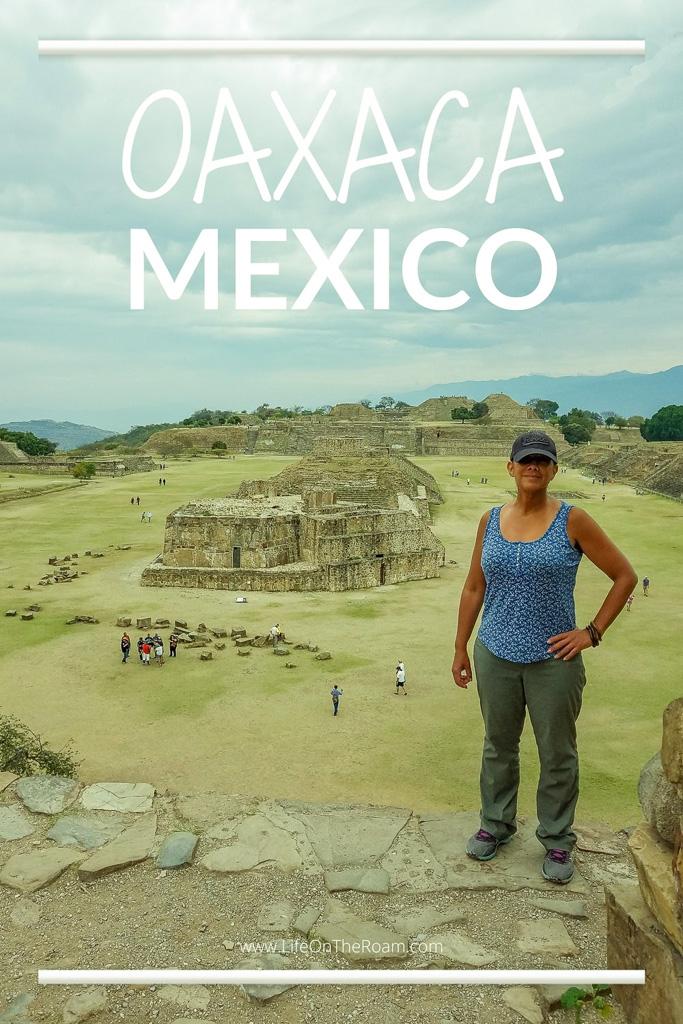
Table of Contents
A Brief History of Monte Albán
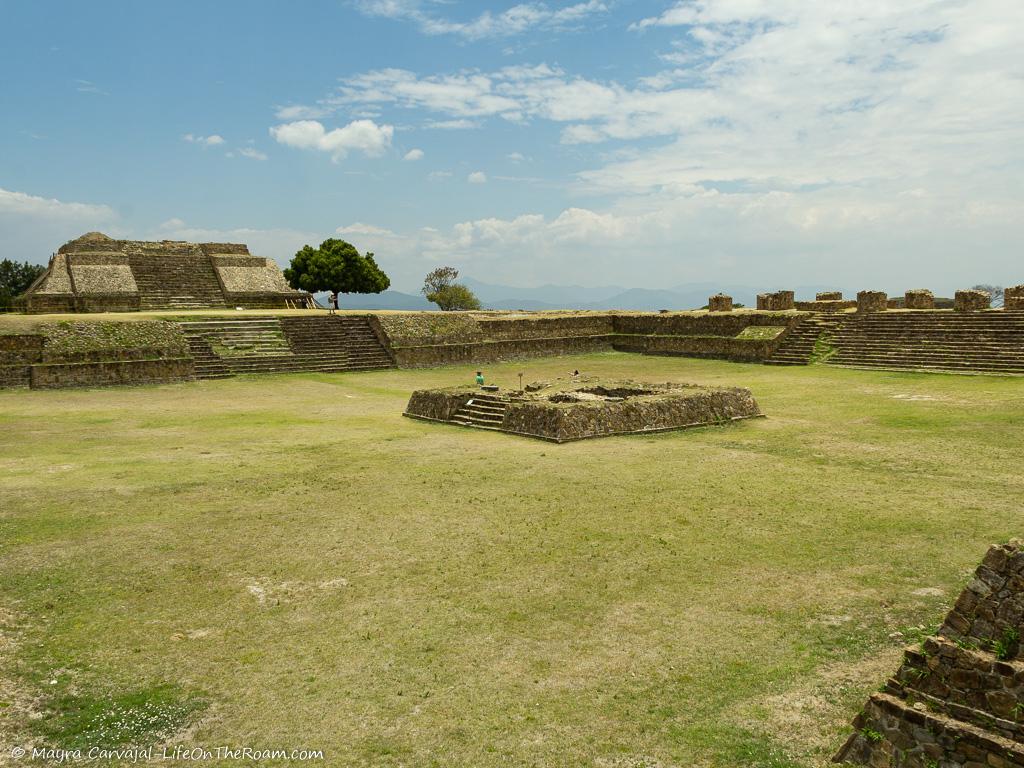
Monte Albán was one of the main pre-Hispanic settlements in Mesoamerica where different ethnicities roamed for 13 centuries since 500 B.C., and where the Zapotec culture lived its golden age until 800 A.D.
Towards 850 A.D. people said That’s it, we’re leaving!
Why was Monte Albán abandoned? No one knows for sure, but rumour has it that the depletion of natural resources over the years had a lot to do with it. Even after there was no one left, the Zapotecs and the Mixtecs saw it as a sacred place.
Even though most of the reconstruction has taken place around the main square, the site spans 20 square kilometres, beyond Monte Albán hill.
The population fed on local crops (mainly corn, squash, avocado, chile, and beans), hunting (deer, rabbits, and birds), and insects you can still find in today’s markets, such as chapulines (grasshoppers), and maguey worms.
It was a common practice to cultivate plants for medicinal use and for weaving textiles, making everyday utensils, and as a building material. All the planting was done by the lower classes and if you were a priest, a warrior, a ruler, or a prosperous merchant, you were the big boss.
Life revolved around religious ceremonies and offerings revolved around the sun, moon, and stars, dictating the planning of the city and the scheduling of agricultural activities.
Inspired by their surroundings, people replicated the shape of the hills on the buildings erected on the hill’s terraces, smoothing and leveling the tops. Local and regional materials included stone for the foundations and the tombs (also used for tools and utensils), adobe for the walls, stucco for the finishing layer, and minerals for colouring.
Exploring Monte Albán
Below you’ll find what I think are the highlights of this great archeological site. I start with the central buildings in the main plaza and go clockwise from there: east towards the ball court, then walk towards the south platform, head west, and end on the north side.
The Main Plaza
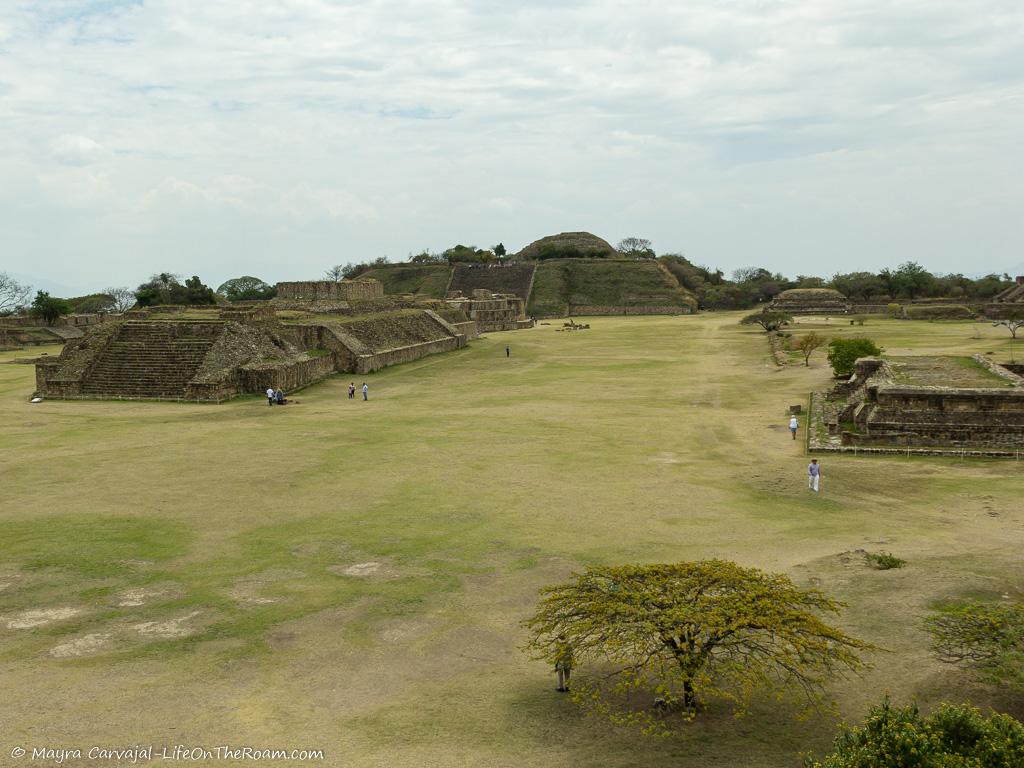
This was the place to be whenever there was a community ceremony. At the centre of the square, you’ll see three central, reconstructed temples (named G, H, and I) right next to each other and belonging to different periods, from 100 B.C. to 800 A.D.
The one on its own (building J), placed at an angle, it’s another structure built around 100 B.C.
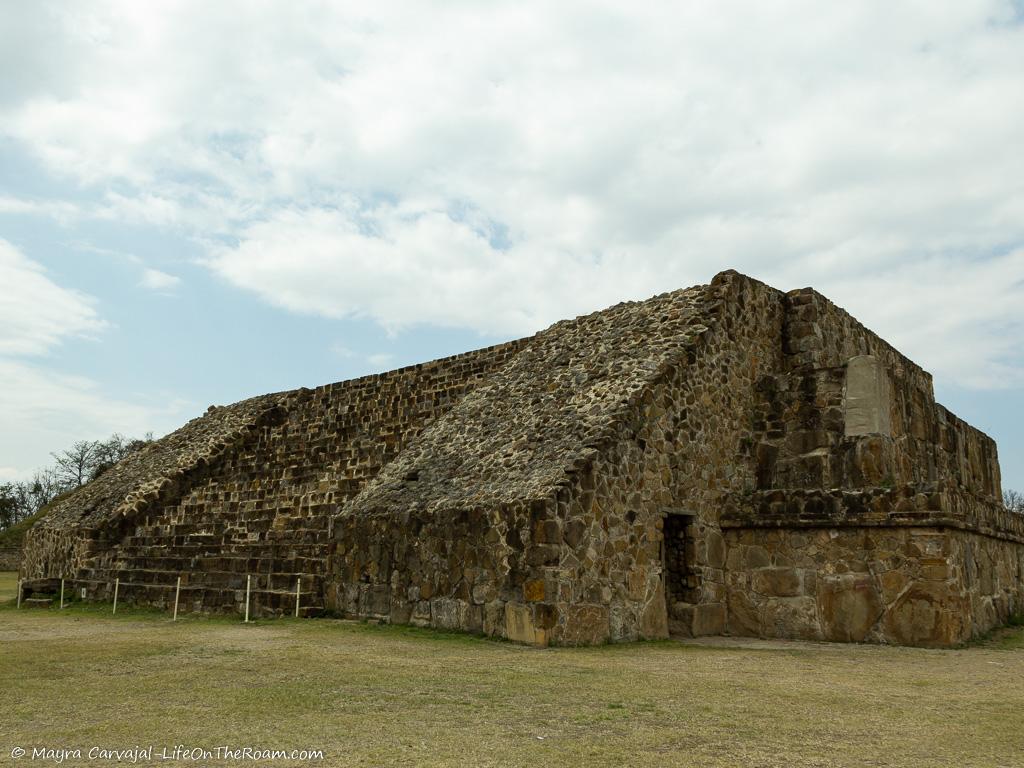
With its irregular shape, it’s believed to be used for astronomical observation, which played an important role in agriculture and construction. Only the crème de la crème had access to it.
Don’t miss the carved stones depicting scenes of Monte Albán conquering other towns (dated 100 B.C.-200 A.D.). The upside-down heads represented victory over their enemies and sent a clear message: this is how you’re going to end if you mess with us.
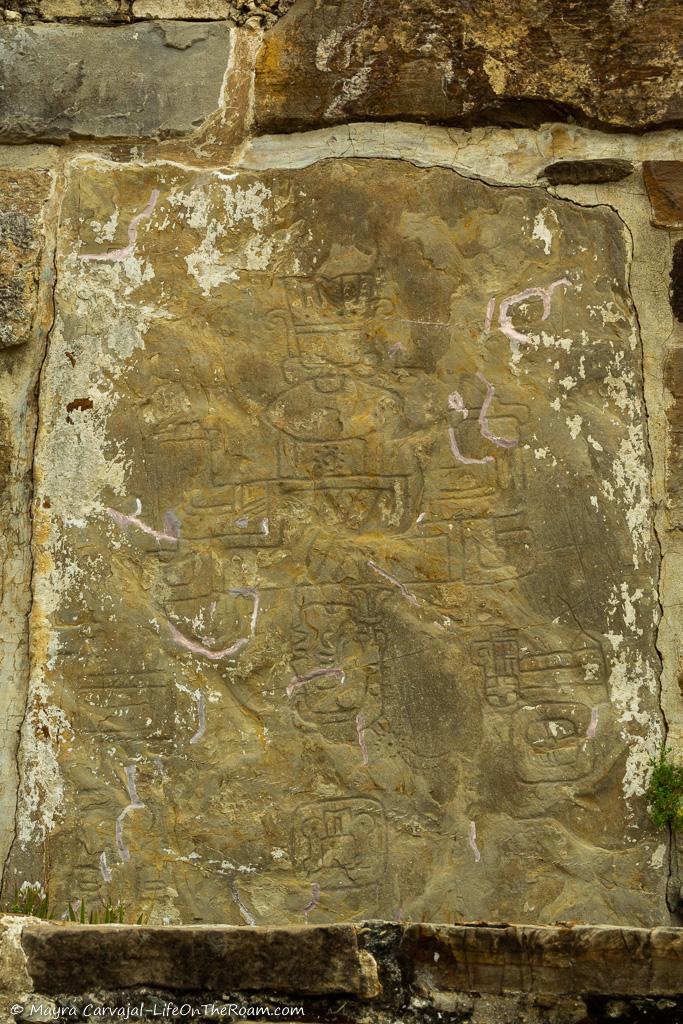
The other astronomical observatory in Monte Albán is building P, located on the east side of the main plaza, right in the centre of the hill.
You’ll find structures scattered around, with monumental constructions in the highest elevations and residential units on the terraces and the slopes.
The location of the buildings isn’t random, though. The cardinal points and complex astronomical calculations involving the calendar and the movement of celestial bodies marked the position and orientation of every construction you see.
The Ball Court
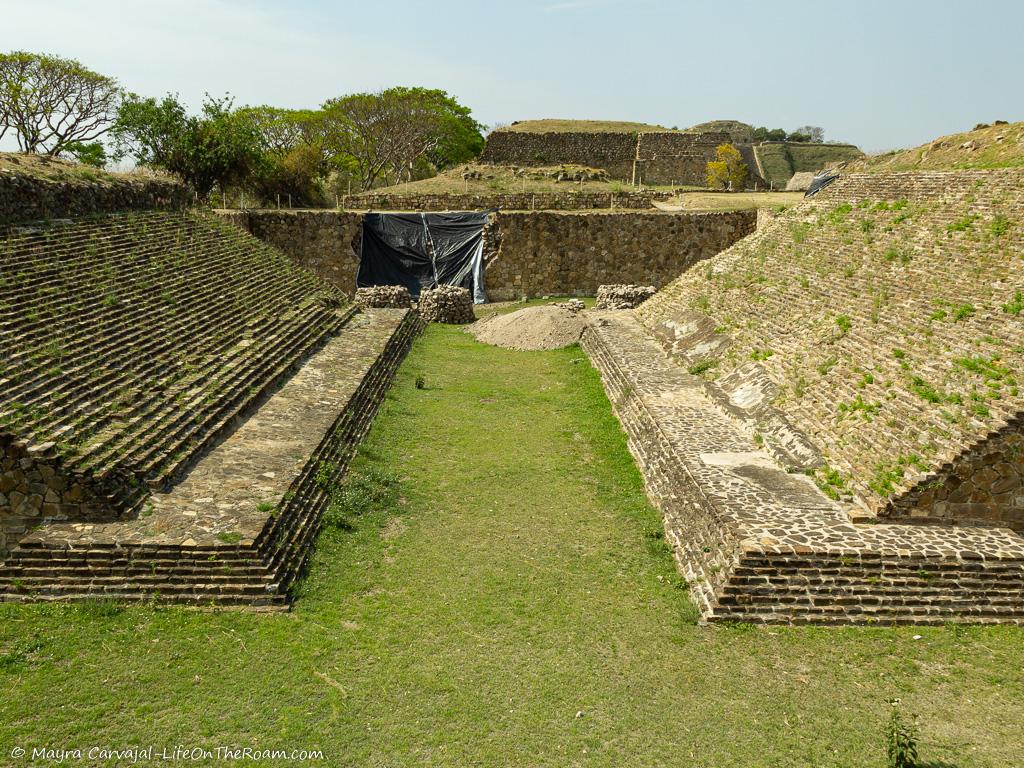
The ball game was more than a game. It was a representation of what happened in the skies above following the movements of the sun and the moon. It could also be used to resolve disputes.
Whose land is this? Yours? Mine? Not sure? Let’s go to the ball court.
People settled their beef right here.
Elbows, hips, and knees bounced the rubber ball against the polished slanted walls (they weren’t bare as you see them here, but covered with a lime mixture) until one team scored enough points to win the game, settle the argument, and win the seal of approval from the gods.
The one you see here, located on the east side of the main plaza, dates back to 100 B.C. and it’s one of the five ball courts they used regularly.
The South Platform
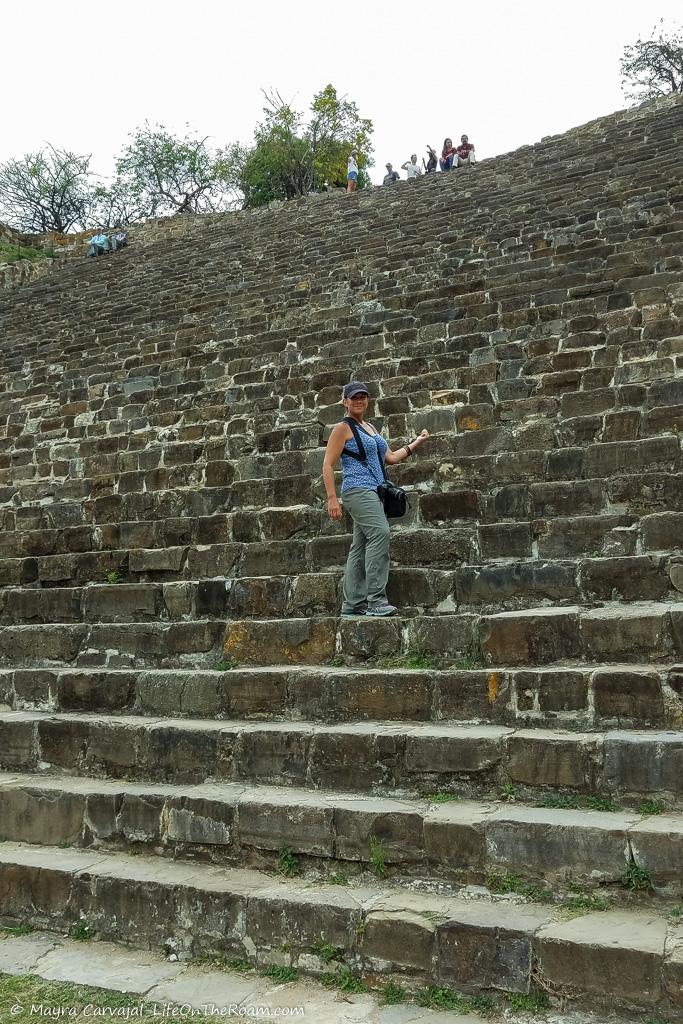
Climb the 40-metre wide steps and walk around a patio and two pyramids. The largest one is named Building III, built between 500-800 A.D. with stones from older buildings. Enjoy the fantastic view of the valley and main plaza with a direct view of Building J (the observatory), System M, and Building L.
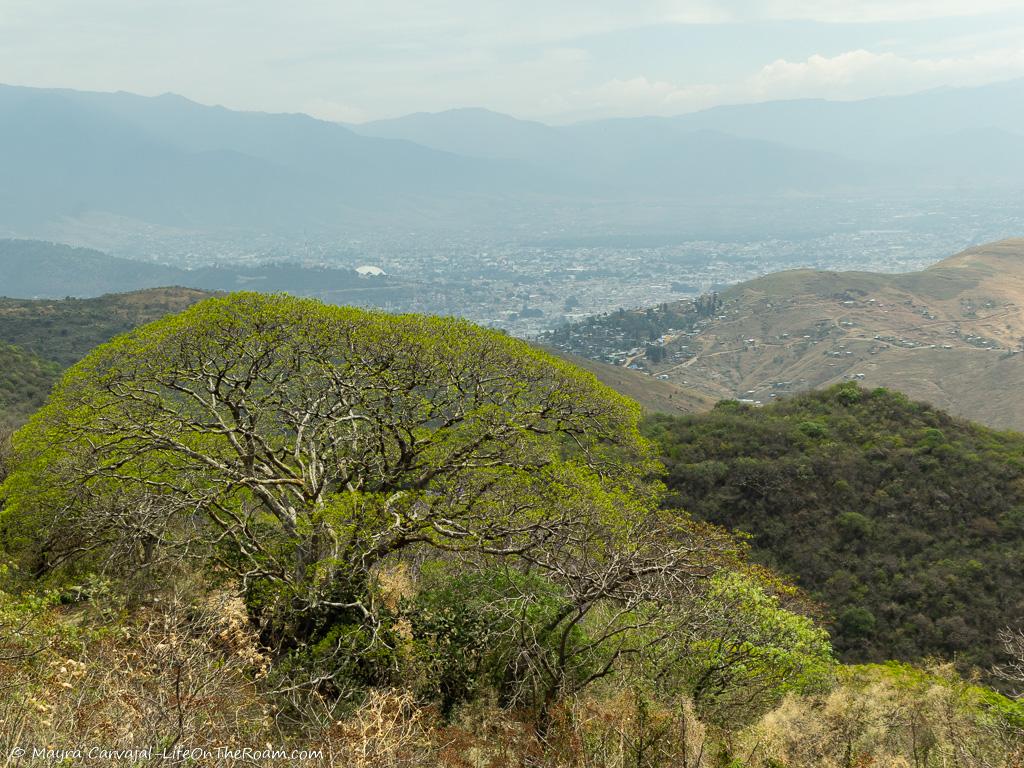
System M, System IV and the Gallery of the Dancers (La Galería de los Danzantes)
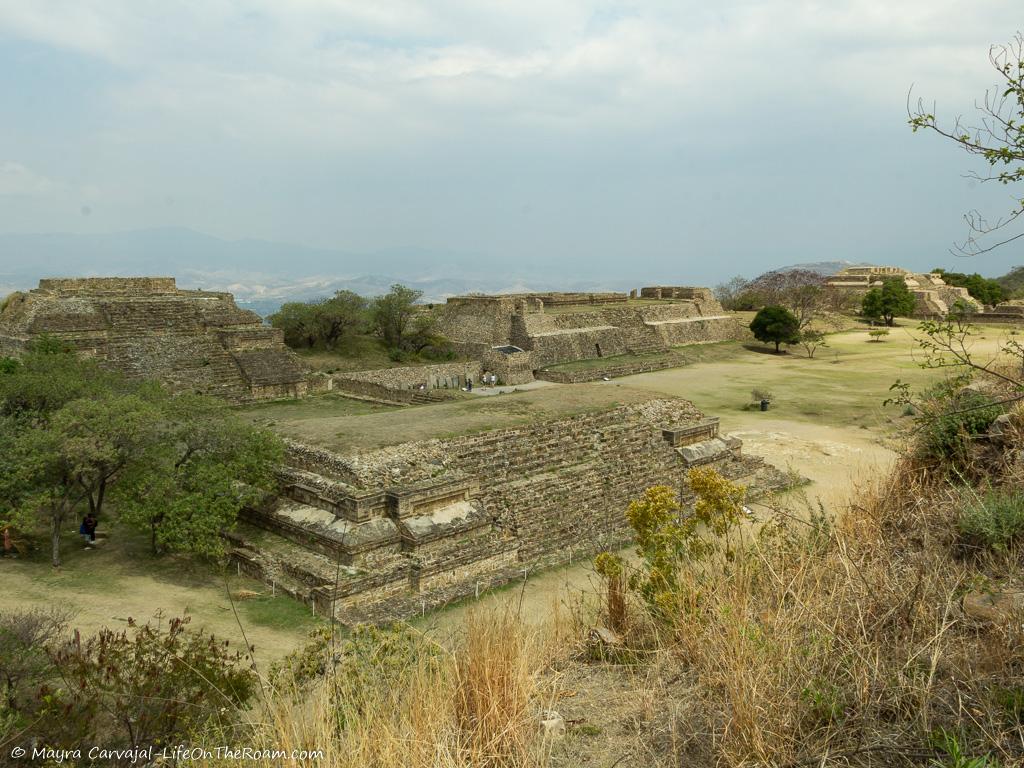
On the west side of the Main Plaza, you’ll find three major structures. At each end lie System M and System IV, two twin temple-patio-altar compounds from 500-800 A.D. with centre altars used for adoration or sacrifices.
In the centre you’ll find Building L (or Building of the Dancers), built between 300-800 A.D. to hold ceremonies (or at least that’s what the archeologists think).
On its left side, you’ll find one of the most interesting features of Monte Albán: a sample of the earliest bas-reliefs found on site, belonging to the first period (500-200 B.C.). They’re also the first findings from the first excavations conducted in 1806.
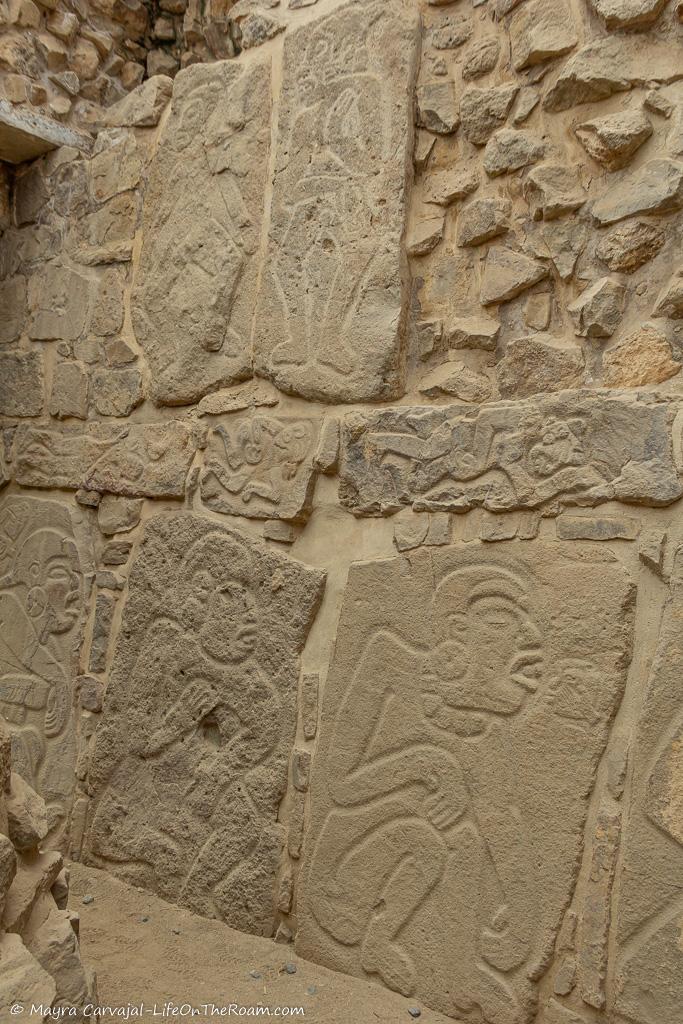
The carvings you see in these stones (called “dancers” because it looks like they’re moving) depict prisoners of wars with a terrible fate: they were castrated, killed for human sacrifice, and their blood drained to fill a cup as an offering to the gods. What an ending!
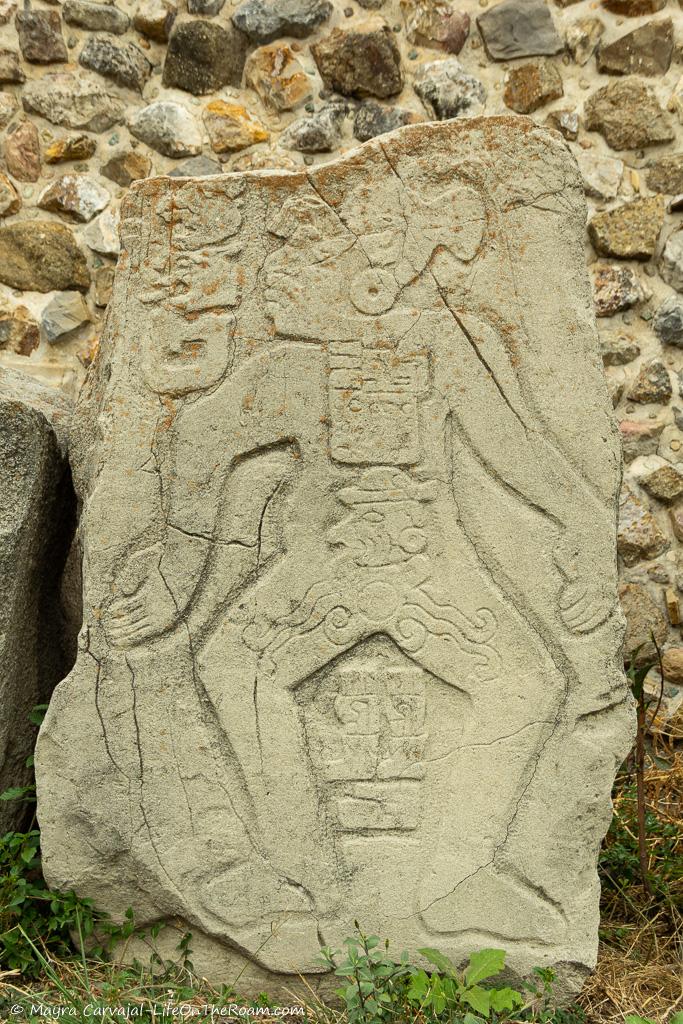
The stones were placed in a particular order to tell a story but centuries later the Zapotecs messed it up when they moved them around to be used in the construction of other buildings. Some originals have been placed in the site museum for preservation.
Next to System IV (or Building K) you’ll see Stela 18. Stelas revealed that Zapotecs had their own highly sophisticated writing system, considered to be one of the oldest in Mesoamerica.
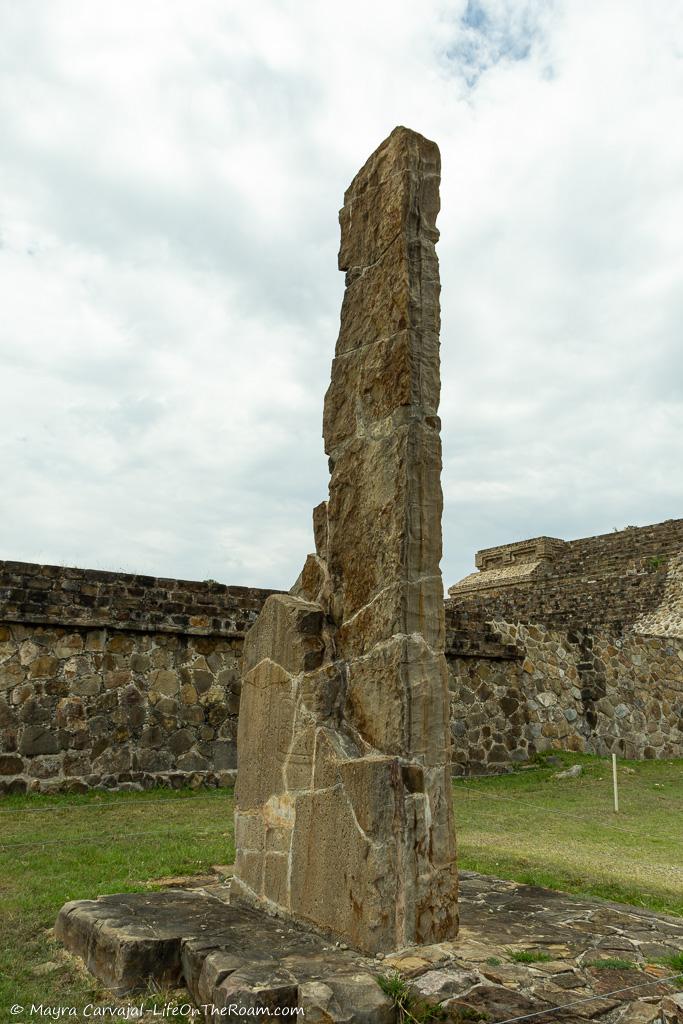
This 19-feet stela is the highest and one of the oldest (100 B.C.-300 A.D.) They believe it was used to determine the time of the day and mark the summer and winter solstice. It’s decorated with glyphs (also found in tombs, pottery, and bones) and ancient writing describing important events.
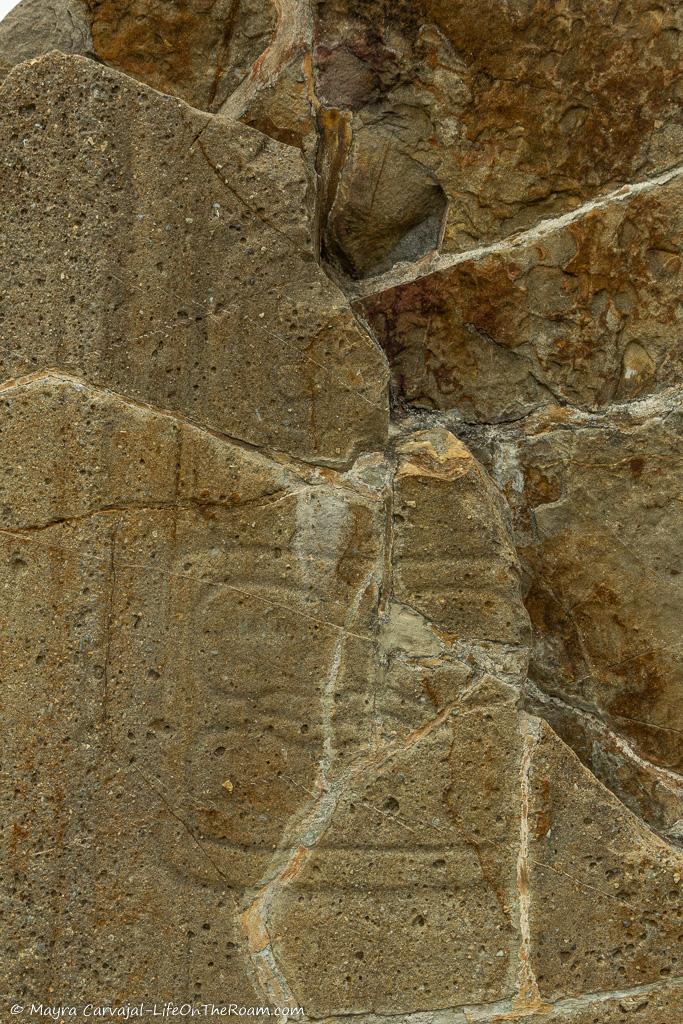
Right across you’ll see two more stelas. Number 9, sitting in the middle point of the north side slope, and one in the chapel (Stela 15).
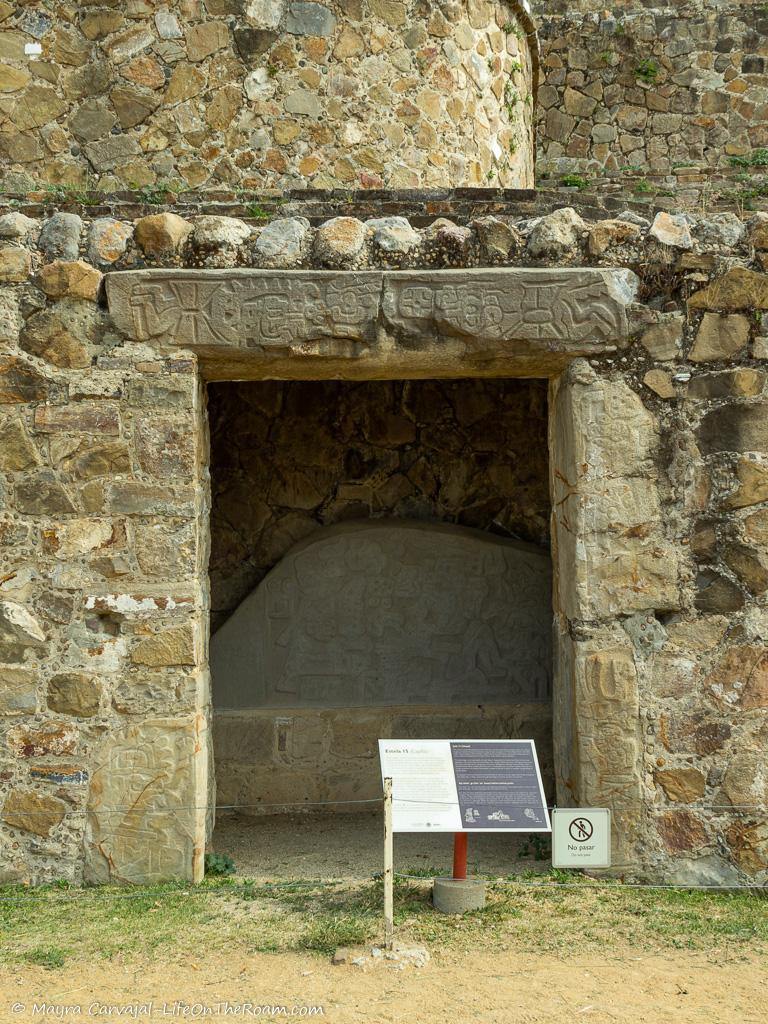
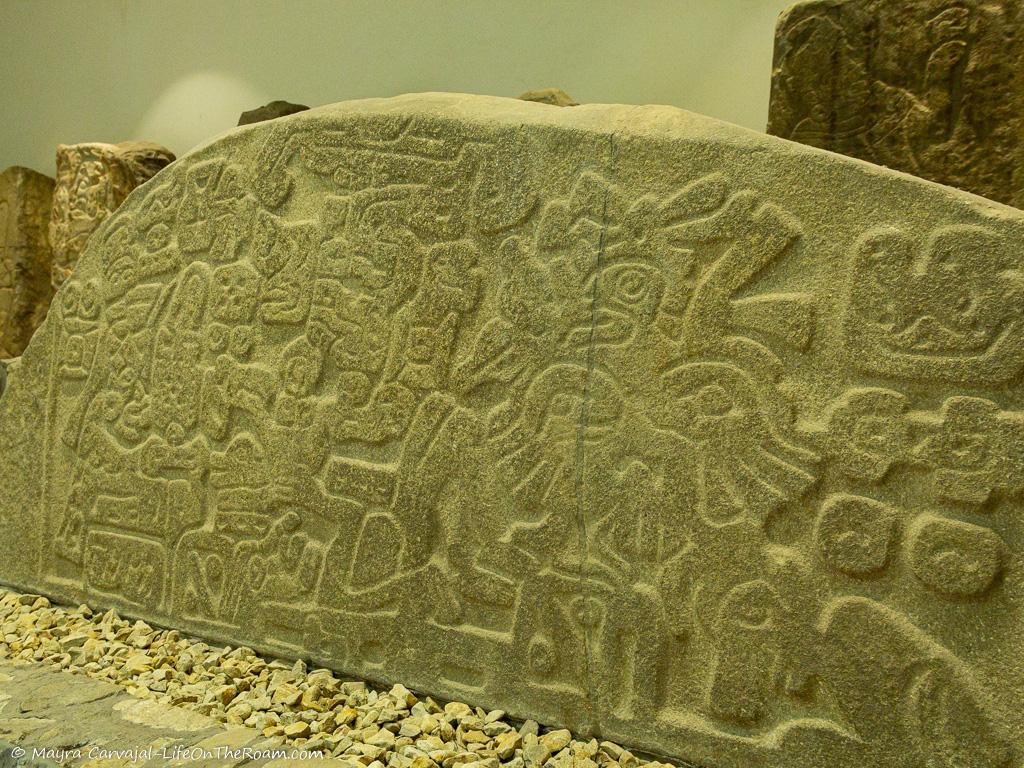
The last one narrates a story of the ascension to power and military victories and it’s considered a unique piece from the late period -600 to 800 A.D.- because it’s horizontal, and it was left in its original location. However, the original stela sits in the site museum in Monte Albán where you can learn about the meaning of the symbols.
The Sunken Patio and Building B
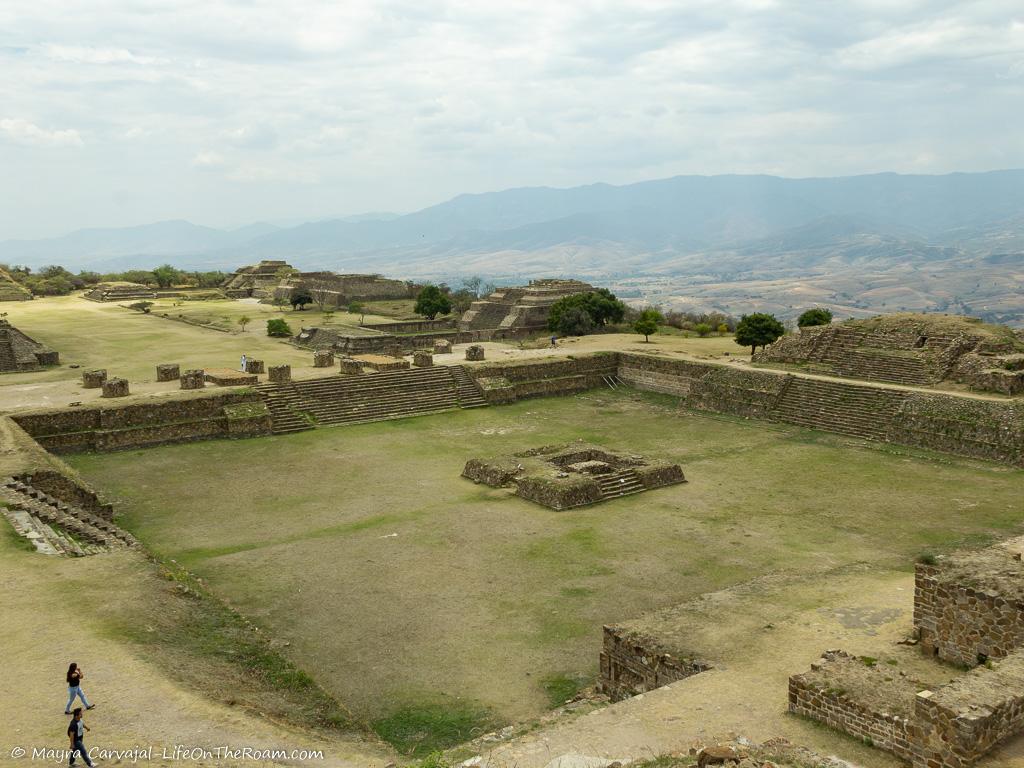
On the north side, there’s a sunken 50 x 50 metre square with an altar in the centre where the high priests performed rites and ceremonies. It’s also a great viewpoint for a birdseye view of the main square and the mountains.
On the west side, you’ll see Building B, a temple that was built in three periods, between 350 B.C. and 1521 A.D.
Climb the stairs of Building I for an awesome view of the sunken patio and the main plaza below.
The VG (Geodesic Vertex) Complex
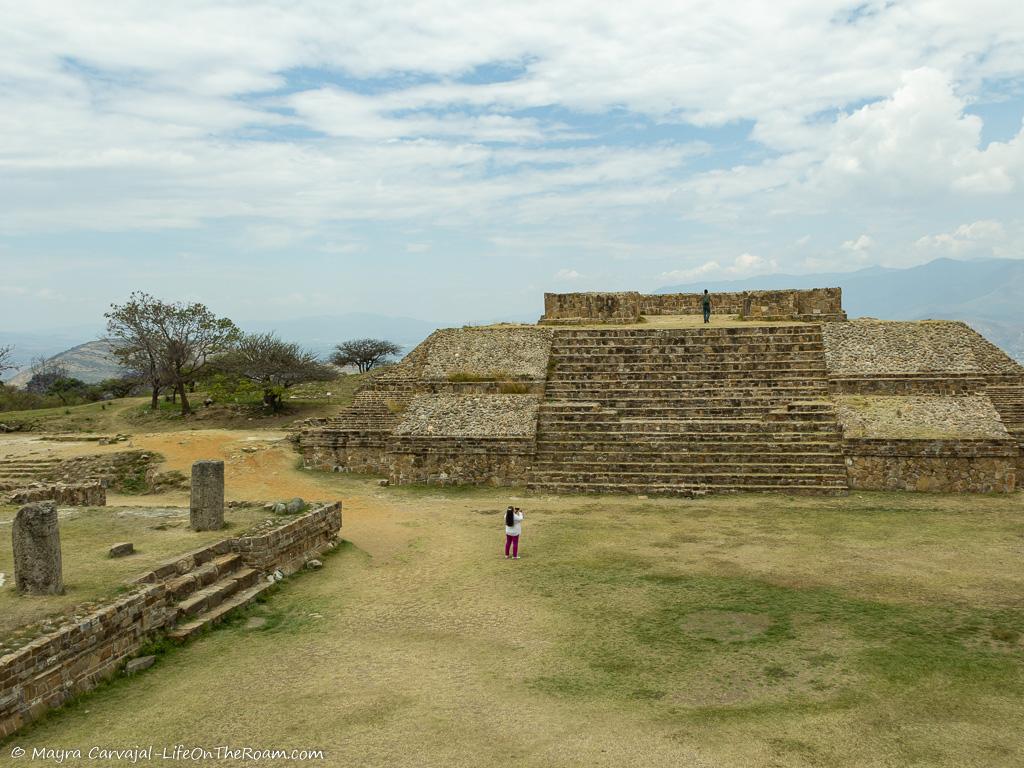
This ceremonial complex dates back to 500-800 D.C., flanked by four temples: D, E, VG, and the one you see on the left, aptly named The Temple of the Two Columns.
The two columns are made of a stone brought from somewhere else, which supported a roof that is long time gone. Walk to the columns to check out the bas-relief of the god of the wide beak.
From the top of the pyramids, you’ll have a great view of Monte Albán.
But what about the name? It comes from its function as a modern-day topographic mark used for mapping.
The Jewelled Platform
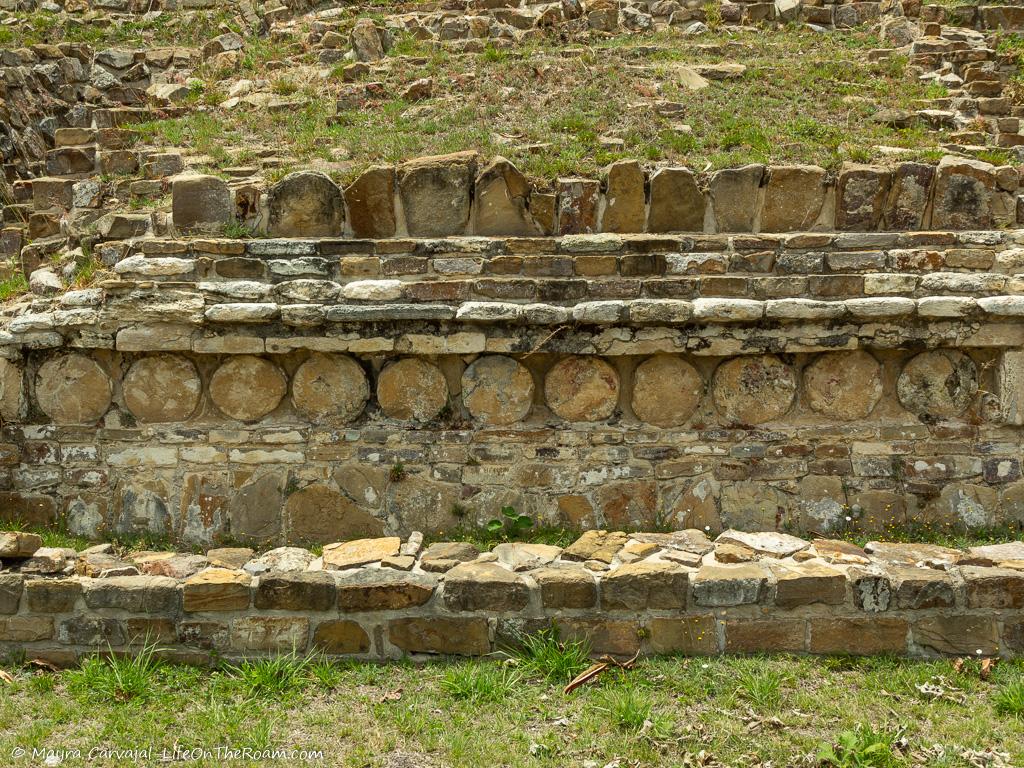
You’ll find it right behind the Geodesic Vertex, on the east side. Only two other buildings in Monte Albán display stone circles with red-painted stucco adorning their platform.
Inside this building, the archeologists found Teotihuacán-style pottery which hints at the possibility that people from that important centre lived here between 300 and 600 A.D.
The Residences (and the Tombs)
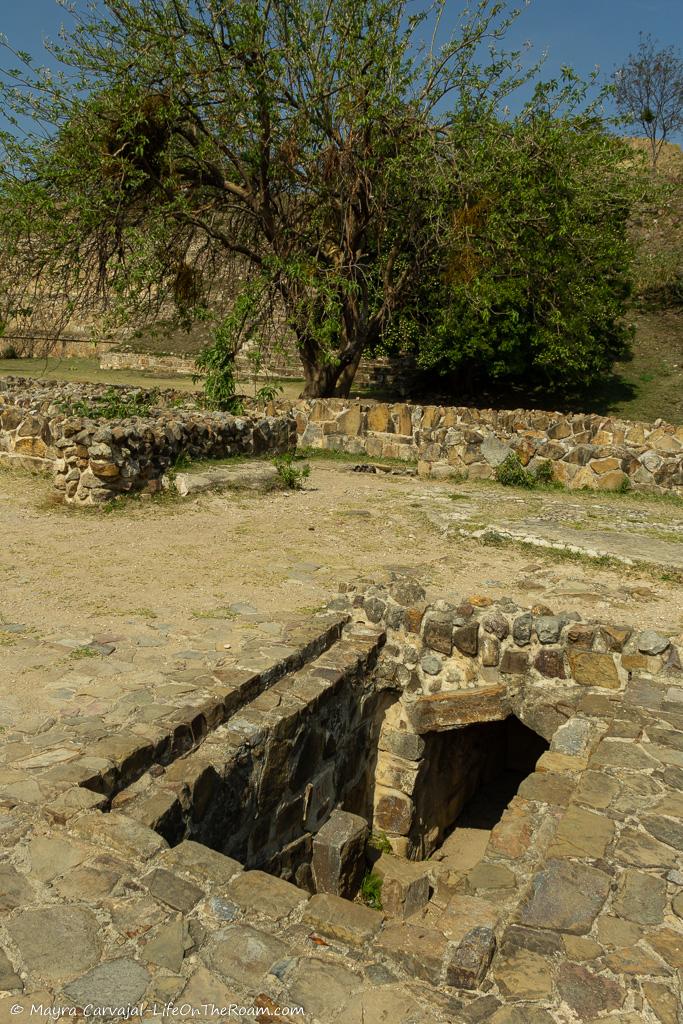
On your way back to the site museum you can check out the remaining walls of a residence. Houses, built with stone, mud, and adobe, were square with a central sunken open patio surrounded by rooms.
A curious, creepy finding is that Monte Albán’s residents built tombs inside their houses (here you’re looking at Tomb 56). People placed offerings to their dead: pottery, jewelry, and other objects made of precious metals, shells, jade, turquoise, alabaster, or bone. The more “important” you were the more precious the offerings.
Nowadays this tradition is relived every Day of the Dead with sugar skulls and flowers instead of jade and bone.
The luxurious palaces with the most desirable zip code were close to the ceremonial buildings.
Tomb 7
Tomb 7 became a legend after archaeologists dug some astounding treasures that have been exhibited in several museums.
Mixtecs placed the remains of some of their VIP in this Zapotec tomb. To accompany the dead in their afterlife they also placed impressive offerings that matched the status of whoever was buried.
You can see some pieces at the Museum of the Cultures of Oaxaca, in Oaxaca City.
The Site Museum
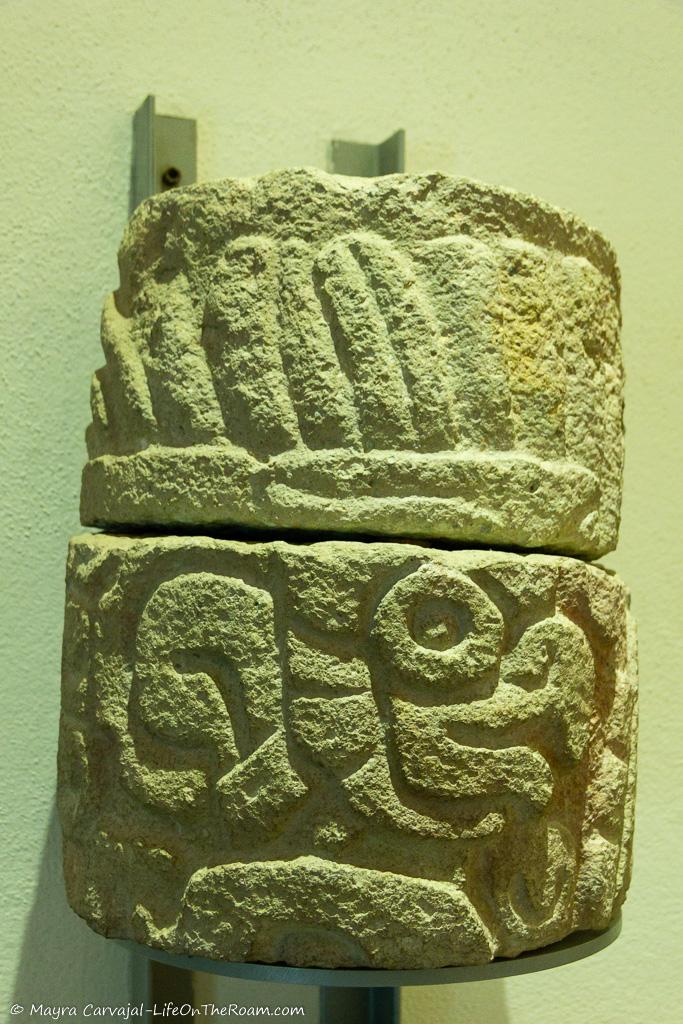
This is where you can see many artifacts, sculptures, carved stones, and personal objects found in the buildings during excavations, in addition to burials and temporary exhibits.
How To Get To Monte Alban from Oaxaca City (Without a Tour)
You can take a shuttle bus that offers round trips to the site. They depart every hour from 8:30AM until 3:30PM (it’s HOT and there’s little shade, better come in the morning).
You’ll have the freedom to go at your own pace and decide when you want to go back to the city.
There are two departure points: one located right in front of the Cathedral of Oaxaca (in the zócalo (main square)), and another one in the lobby of Hotel Rivera del Angel.
Would you like to learn more in depth about the history of Monte Alban? Then you can take this half-day guided tour, great for history buffs, with a rating of 4.8 based on more than 475 reviews.
T
Monte Albán is open daily: 10AM-4PM General admission: MXN$ 95 (includes entrance to the site museum).
Try to go during the week as the site is more crowded on Sundays and holidays as Nationals and residents enjoy free admission.
Monte Albán is one of the best examples of ancient architecture, in a gorgeous setting, and with innumerable treasures that speak of the talent of their former inhabitants.
If you love ancient ruins, visit the Mayan Riviera in Mexico, where you’ll find many interesting archaeological sites.
YOU MAY ALSO WANT TO READ
BOOKING FLIGHTS AND ACCOMMODATIONS
Book your flight without losing your shirt
We check Momondo to find great deals to book our flights. Also, check Great Escape: it combines the listings from Expedia, Kiwi, Kayak, (and Skyscanner on the premium service) to find the best airfares.
To find a place to stay for less
Booking.com: this site combines everything under the sun. You’ll find hotels, apartments, B&B, hostels, rooms, etc., with all sort of filters to make your search a breeze.
Hotwire: the first site I check when we plan to stay at a hotel for a few nights. You can save anything from 20% to 60%. Use the search filter to find what you want and you’ll end up with three listings that match your criteria. You’ll know which one you’ll get after you book. If you can handle a little bit of uncertainty you can score big savings.
House Sitting: you take care of people’s pets and house for free while staying for free. It’s the closest thing to experiencing a place “like a local”. But it comes with responsibilities… Are you an animal lover? It may become your new way to travel.
To get travel insurance
SafetyWing: travel medical insurance that gives us peace of mind knowing that we’re covered in case of emergency. It’s convenient, affordable, and suitable for digital nomads who spend a long time outside their home country.
Check the full list of travel resources on my Resource Page for more options and savings
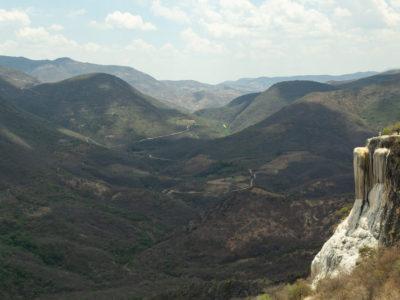
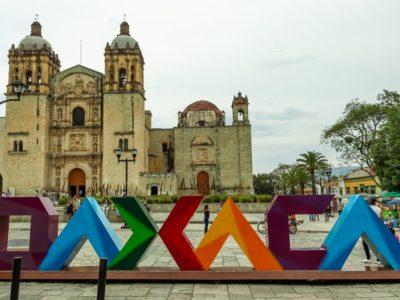
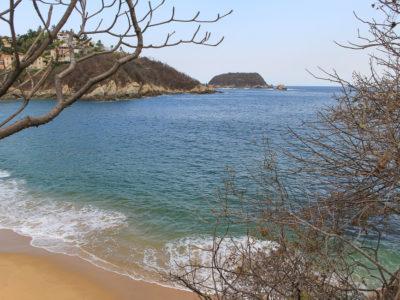
This is so interesting! I would like to visit one day. I already visited pyramids in Cozumel and the pyramids of La Luna and El Sol in Teotihuacán. I love archeological sites. Thanks!
I loved Teotihuacán as well. It’s interesting that they found Teotihuacán-style artifacts in Monte Albán, so they were here. I still have to visit the ones in Cozumel.
So much history! Its so beautiful, my auntie is actually on her way to Monte Albán this summer so will be sharing this with her, thank you for this!
Thanks! I hope your auntie enjoys it as much as I did.